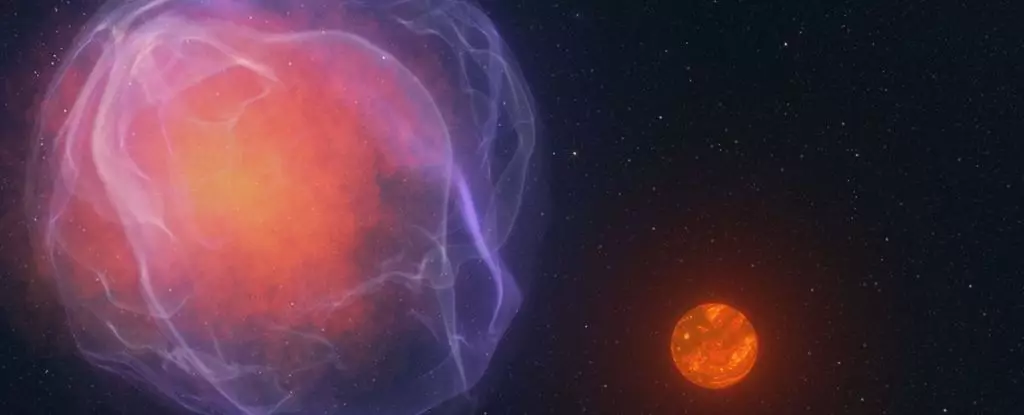In the vast expanse of the Milky Way galaxy, most stars follow the expected trajectory around the galactic center. However, outliers exist in the form of hypervelocity stars, which break free from the normal orbital path and hurtle through space at incredible speeds. These stars, while rare, provide an intriguing puzzle for astronomers to decipher.
Recently, astronomers have identified a particularly fascinating hypervelocity star named CWISE J124909+362116.0, affectionately known as J1249+36. What sets this star apart is not only its velocity, exceeding the galactic escape speed at 600 kilometers per second, but also its classification as an L subdwarf – a type of ancient, tiny main sequence star. J1249+36 is considered one of the oldest stars in the Milky Way, adding to its enigmatic nature.
At the 244th Meeting of the American Astronomical Society, researchers presented their findings on J1249+36, offering three potential explanations for its extraordinary velocity. The first hypothesis suggests that the star was expelled from a binary system involving a white dwarf companion. In such a scenario, the white dwarf could have experienced a Type Ia supernova, propelling the star into high speeds.
Many-Body Interactions in Globular Clusters
Another theory proposes a many-body interaction within globular clusters, dense regions of the galaxy containing millions of stars. These clusters, believed to harbor black hole binary pairs, could have catapulted J1249+36 across the Milky Way. While plausible, this scenario has yet to be conclusively proven through trajectory analysis.
Extragalactic Origins of Hypervelocity Stars
The third possibility suggests that J1249+36 originated from one of the satellite dwarf galaxies orbiting the Milky Way. Previous studies have indicated that hypervelocity stars could have extragalactic origins, making this theory viable. By analyzing the chemical composition of J1249+36, astronomers hope to pinpoint its source and unravel the mystery of its accelerated motion.
Unraveling the Enigma
To unlock the secrets of hypervelocity stars like J1249+36, further research and meticulous study are required. By delving into the star’s chemical makeup and tracing its journey through the cosmos, scientists aim to determine whether it was once part of a white dwarf binary, ejected from a globular cluster, or originated from a distant satellite galaxy. Each potential explanation offers a glimpse into the complex and varied pathways that celestial bodies can take in the vastness of space.
As advancements in technology and observational techniques continue to expand our understanding of the universe, the discovery of hypervelocity stars presents a thrilling challenge for astronomers. By piecing together the puzzle of stars like J1249+36, we inch closer to unraveling the mysteries of our galactic neighborhood and the forces that shape the cosmos.


Leave a Reply